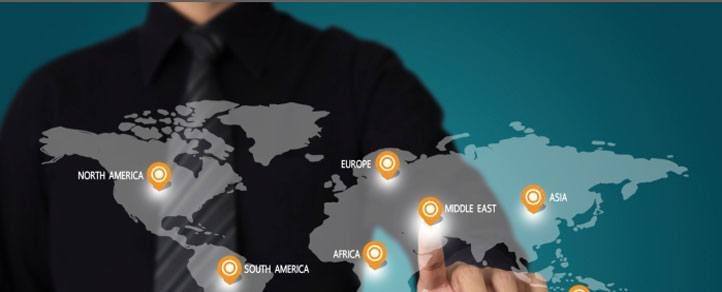Video localization is essential for creating well-produced video content that gets results every time it rolls out in front of potential clients and customers.
This is particularly important if your business is preparing to expand into the international arena. In this instance, your video must be able to work its magic in multiple languages.
But therein lies the challenge.
Transforming your marketing video’s impact isn’t just about translating its words.
Whether it’s a corporate video, explainer, or commercial, your video’s audio content must be carefully adapted to reflect the tone and style of the target market’s language, while also respecting their cultural nuances and values.
That means you need to “localize” it.
Good Video Localization Stops Meaning Getting Lost in Translation
When we talk about “video localization”, we’re not talking about repeating the same words in a different language.
Meaning can be lost in translation if you simply swap words without considering their often nuanced cultural context.
Additionally, if the (new) voiceover doesn’t match the original video’s flow, viewers can be left scratching their heads in confusion.
Truthfully, if you want to localize a video that you’ve already had proven success with in one country, there are five common pitfalls to avoid.
We’ve outlined them in this article.
By keeping them front and center in your video localization project, you’ll be able to create countless convincing and culturally relevant videos to help spread the word about your business’s or organization’s work.
What is Video Localization?
Before we get up close and personal with the five pitfalls to avoid, let’s first define what video localization actually entails.
According to Statista, while there are 1.46 billion global English speakers, they still make up less than 20% of the entire world population.
Put that another way, as a global business approximately 4 in 5 of your potential customers may be unable to understand your video output, at least without a translation tool.
But translation is only the first step. Localizing languages is not simply a matter of translating a text and then tacking it onto your video as a voiceover.
Rather, localization is the art of tailoring a product or service to fit seamlessly into a specific language and culture of a target audience.
The best kind of localized offering understands the unique nuances, cultural sensitivities, accents, and dialects used in languages of certain regions and countries.
It’s this attention to accuracy that will ensure the video (and the service or product it’s spotlighting) exudes a sense of belonging and resonates with everyone.
Even in specific regions, there may be subtle shifts in accent and dialect that listeners born and bred there will notice.
For instance, voice actor Ramesh M., a local of the Spanish Canary Islands, notes:
The Canarians have a very particular accent, completely different from mainland Castillian Spanish.
In Spain, as in so many regions in the UK, including Scotland and Wales, we have a regional accent that makes us stand out, and which has its own unique cadence and prosody.
Yet even among the eight main islands that make up the Canary Isles, there are still differences.
Those with an ear for Spanish will find that folk living in Lanzarote have their own unique local style of speaking compared to their neighbors across the water in Tenerife.
For example, Ramesh’s video for Lanzarote Biosphere Sustainable is delivered in a neutral Canarian accent with a corporate edge, reflecting the target audience.
However, the below promotional video, which he also voiced, sounds more robust and is aimed at the local market.
He explains:
The accent is rougher on the edges with more of the “sucked in” ending syllables and “s’ sound at the ends of the word, which popularly denotes the Canary accent.
A producer needs to know how far to push the slider on the strength of the local accent they’re using.
The variations in the accents of the Canary Islands offer a great example of video localization.
In the end, it’s the difference between a generic offering and one that truly speaks the language and captures the hearts of its target audience.
So, let’s dive into some of the localization traps to look out for.
Video Localization Mistake #1: Ignoring Cultural Colloquialisms
Think video localization is child’s play? A piece of cake? A walk in the park?
Well, hold your horses because words, phrases, and cultural references in one language can cause complete confusion in another.
This is particularly important if you’re using humor in your video; wordplay and puns in particular tend to be first to get lost in translation.
For your global video, do your research, and use native speakers when it comes to translation and voiceovers.
If you ignore specific regional dialects and their unique turn of phrase or use of language, then your video will be, well, such a bummer.
OK, I’ll stop with the cultural colloquialisms now.
My bad.
Video Localization Mistake #2: Dubbing Vs. Subtitles
Alongside researching local dialects, it’s important to dig deep into the dominant localization method used in the country you’ll be marketing to.
Have a look at foreign movies and TV programs in the region—are they generally dubbed or subtitled?
Make a note of any specific requirements your audience might have.
For instance, if you’re marketing to a primarily hard-of-hearing audience, it would be a no-brainer to incorporate subtitles.
That said, many people with unimpaired hearing prefer subtitles too, so do your research as to whether that’s the norm in whatever new market you’re aiming to target.
Additionally, if you’re looking for a voiceover for a creative piece, such as the below American English voiceover for Agfa Eclipse Vision, then it goes without saying that you’ll use subtitles alongside the VO.
Dubbing, which is adding lip-synched dialogue to a film/video production, might be the better choice for your new audience.
Viewers often prefer to watch videos in their native tongue, without the distraction of having to follow the subtitles below.
For many, this provides a more immersive and natural viewing experience.
Of course, for dubbing to work well you need to engage skilled voice actors who can convey the necessary emotions, tone, and nuances of the original dialogue in the appropriate dialect or accent.
Hiring a voice actor with the required expertise to effectively communicate the message of your particular video is another “must-do” when it comes to dubbing.
For instance, if you’re hoping to redo a commercial for a different market, it’s essential you hire a professional voice actor with a track record in commercials.
Video Localization Mistake #3: Not Translating the Message Accurately
As noted above, proper and persuasive translation involves much more than simply converting words into the language of your target market.
It’s about adapting the content so that it fits the cultural context and linguistic preferences of the intended viewers.
An example of this is the Be Red Cross video, where Voice Crafters produced voiceovers in Mandarin, Cantonese, French, and Mexican Spanish.
Additionally, a hard-sell approach that may work well in one market, may have an adverse effect in another.
It’s essential, then, that the translator you use is deeply immersed in the target country’s culture, and has a distinct understanding of the text so that he can perform his or her job precisely as well as professionally.
Video Localization Mistake #4: Having Different Word Counts
You must consider the length of the translated text and its timing in relation to the video visuals.
The word count in the target language should be as close as possible to the source language—preferably in each paragraph or section of the text.
Assuming the original video cannot be altered, a translation that doesn’t follow this guideline may result in a voice-over that would need to be sped up to an unnatural, (and maybe embarrassingly squeaky-sounding) pace to match the visuals.
On the flip side, the VO may need to be slowed down, dragged out, or include stilted pauses placed between scenes.
Either way, both outcomes will reflect poorly on the finished product.
Video Localization Mistake #5: Not Using Professional Voice Actors
Finally, finding the right talent is crucial for your video localization project’s success.
Professional voice actors bring their own specific training and talent to the job, and you need to sign up the one whose skillset matches your needs.
For example, if you’re a not-for-profit organization you may want someone with warm, compassionate tones.
On the other hand, a global enterprise intent on selling its suite of products or services in a new market may require a strong and solid voice that emanates trust and dependability.
But whatever your needs, don’t worry. Voice Crafters can help you.
We have a huge, ever-growing pool of professional voice talents and specialize in video localization. We’re ready to help you grow your business internationally, so contact us today!












0 Comments